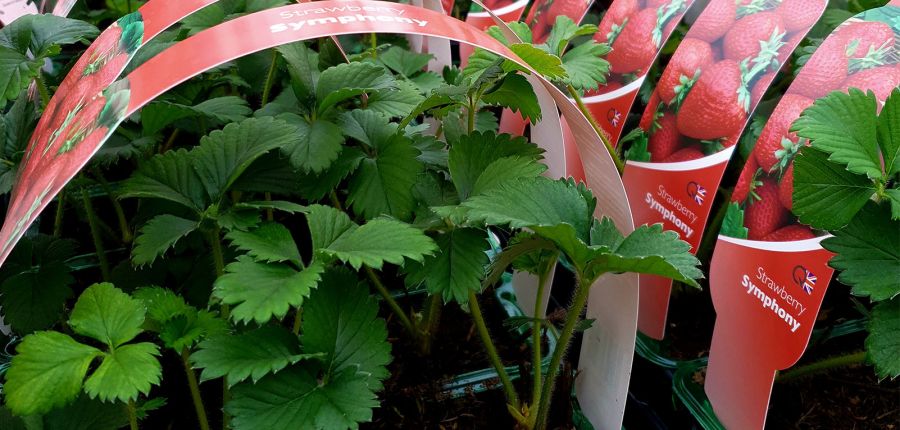How to make a strawberry bed
Posted By: rocket veg Category: Plant CareNo self-respecting allotment is complete without a strawberry bed, so if you don’t have one, now is the time to get started – especially as this season’s plants have finished fruiting and are now busy sending out ‘runners’ and you may be lucky enough to find other allotmenteers with a ready supply of young strawberry plants looking for new homes. Given the right conditions, strawberry plants will provide you with a steady supply of delicious fruit for a couple of weeks in mid-summer.
Where to make a strawberry bed
When planning where to create your strawberry bed, look for a sunny, sheltered spot. Places to avoid are frost pockets; exposed, windy spots where bees and other pollinators will struggle to get to the flowers; or a piece of ground where strawberries, potatoes, tomatoes and chrysanthemums have been grown in the past, in case the soil contains verticillium – a microscopic fungus which causes wilt and die-back in certain species. To do well, strawberries need rich, free-draining soil, so be sure to add the right components both before planting, as well as when maintaining an established strawberry bed. Raised beds are ideal for strawberries, providing a good depth of free-draining soil to encourage long root systems. When I started a new strawberry bed, I mixed a quantity of farm manure into the soil a couple of weeks before planting.
Choosing and planting strawberries
There are many varieties of strawberry which will fruit early or later in the summer, but the ones which produce fruit mid-season are by far and away the most popular. If you intend buying strawberry plants, choose a good supplier to ensure that the plants are the correct cultivar. An easier way to obtain strawberry plants is to make friends with a gardener who has an established strawberry bed and who will give you a handful of ‘runners’ – the straggly shoots which grow from the parent plant, settle on a patch of soil where they develop a tight knot of roots and gradually grow into tiny plant. Planted before winter sets in, a dozen or so runners will give you the basis of a good size strawberry bed the following summer but make sure that you water them on a regular basis to encourage the development of a strong root system.
In spring, you might be lucky enough to be offered young strawberry plants which have over-wintered in pots and therefore will have developed good root systems. If you are not too fussy about the variety, plant these as soon as the soil has warmed and you should get a modest crop a few weeks later. If you want an early crop of fruit, put a tunnel cloche over the plants but make sure you remove the cloche when the flowers first appear or pollinating insects won’t be able to get in.
Caring for your plants
When your fledgling strawberry bed is beginning to come into its own and the plants are flowering it’s time to give them a feed of liquid potash on a weekly basis as the embryonic berries begin to develop. Tomato feed is good; homemade comfrey feed even better, and it’s free. During hot, dry spells, be sure to water your strawberry plants - always around the base of each plant as watering from above is likely to rot the crown and spoil the developing fruit.
The traditional way to keep the ripening fruit clear of the soil and the risk of rot is to tuck a layer of straw around the base of each plant and under the leaves – hence the name! A circular fibre mat or disc cut from a cardboard box work just as well but don’t really look the part. As well as protecting your precious crop, each of these methods will also help to suppress weeds.
Aftercare of strawberry plants
We ate the last strawberries from my allotment plot a month ago. Since then, I’ve cut off the runners and I’m now busy giving each plant a tidy up by snipping off the old leaves with scissors. Tempting though it is to leave the straw in place, I’ve learnt that it’s best removed so that light and air can circulate round the plants and slugs and bugs have nowhere to hide. My strawberry plants have given me a good crop over the past three years, so I am planting to replace them soon and start a new bed in a different spot to reduce the risk of disease.







